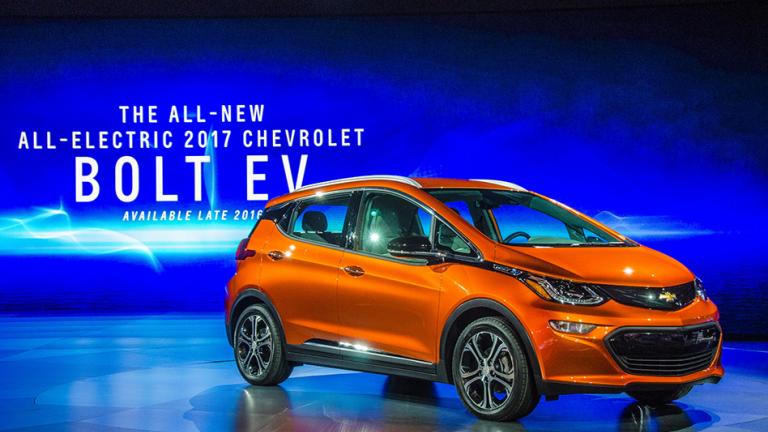
Aggressive climate policy could boost EV market share, halve roadway emissions by 2050
Mark Dwortzan | MIT Joint Program on the Science and Policy of Global Change
The electrification of private cars and light trucks—the vast majority of which are now powered by internal combustion engines (ICEs)—will be critical to efforts to keep global warming well below 2°C or 1.5°C, the long-term goals of the Paris Agreement. Replacing today’s fleet of gasoline and diesel ICEs with plug-in hybrid (PHEV) and battery (BEV) electric vehicles (EVs) could practically eliminate emissions from these light-duty vehicles as part of a broader strategy to decarbonize the transportation sector.
To better understand the potential impact of electric vehicle deployment on total global carbon dioxide emissions, researchers at the MIT Joint Program on the Science and Policy of Global Change enhanced the MIT Economic Projection and Policy Analysis (EPPA) model to represent the fleet dynamics of light-duty vehicles (LDVs) including ICEs, PHEVs and BEVs. Using the enhanced model, they projected global and regional LDV emissions under different climate policy scenarios between the years 2015 and 2050.
Appearing in the journal Transportation Research Part D, the study considered a range of increasingly stringent policy scenarios, from a reference scenario that excludes national pledges delineated in the Paris Agreement to one aligned with the accord’s long-term 2°C goal. The researchers found that as the number of global LDVs grows from 1.1 billion to 1.6-1.8 billion between 2015 and 2050, EV units increase from 1 million to 585-825 million, and thus account for one-third (reference scenario) to one-half (2°C scenario) of the global LDV fleet.
Even as the global LDV fleet grows by about 50 percent over the study period, total fleet CO2 emissions decline by about 50 percent under the 2°C scenario (compared to 10 percent in the reference scenario).
“Our study suggests that the electrification of light-duty vehicles could play an important role in broader efforts to mitigate global climate change,” says Abbas Ghandi, lead author of the study and a former research associate at the MIT Joint Program. “It also highlights the caliber of insights we can gain from including more precise representation of electric vehicle fleet dynamics in economy-wide energy-economic models.”
The researchers also projected that EV market penetration will vary by region under the range of policy scenarios, particularly in the world’s three largest markets: China, the U.S. and Europe.
The study was completed in contribution to the MIT Mobility of the Future study, which explored how climate policy and other key factors may shape the evolution of personal mobility between now and mid-century.
“Our study combines the strengths of detailed transportation models that project fleet dynamics with economy-wide modeling that captures inter-industry and inter-regional interactions,” says Sergey Paltsev, deputy director of the MIT Joint Program and co-author of the study. “It enhances assessments that we provide to decision makers and industry analysts on the robust pathways for decarbonization of all sectors of economy,”
Photo: 2017 Chevy Bolt (Source: Flickr/Dave Pinter)






